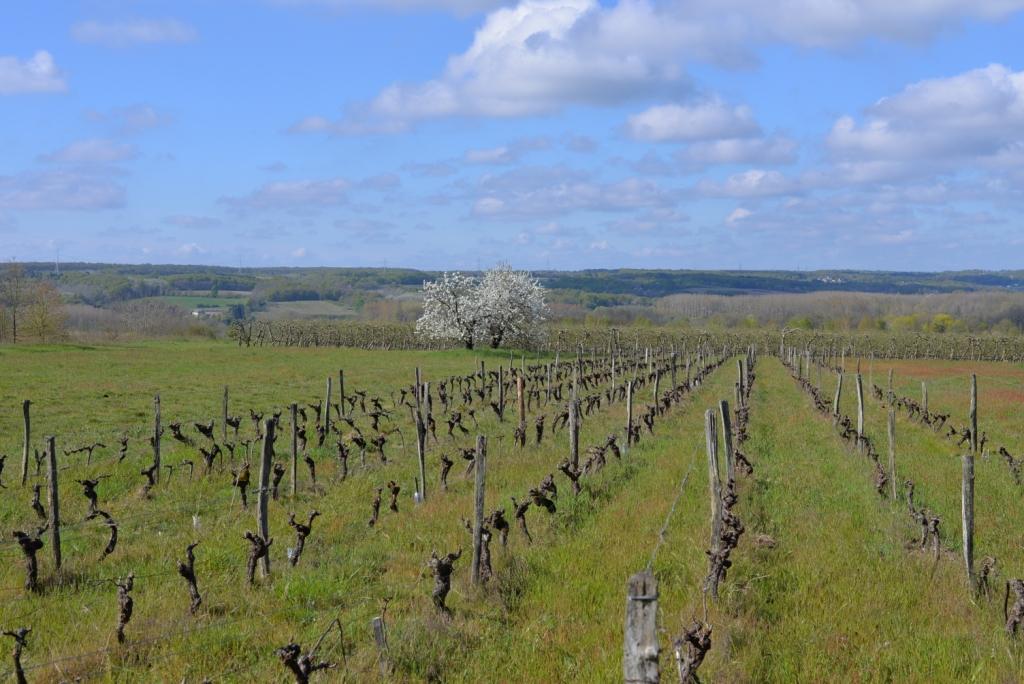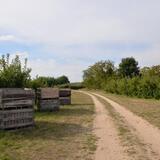
The Indre joins the Loire Valley via a gap in the hillside in the municipality of Azay-le-Rideau downstream from Lignières-de-Touraine, creating a gently sloped spur. The river then joins the Loire at the confluence located some ten kilometres downstream at Le Néman, in the municipality of Avoine.
The upper part of the interfluve is covered by a mosaic of piecemeal orchards and vineyards – a pattern that has stood the test of time, bearing witness to an age-old form of organisation that is altogether typical of historical Ligerian agricultural landscapes, the remains of which are few and far between these days. The agricultural plateau combines with an area of troglodytic dwellings and their cellars located at the foot of the hillside.
The far end of the interfluve also constitutes a panoramic viewpoint boasting 360° views over the Loire Valley. Its geographical positioning, forming an overhang in the valley, with east/west orientation in the axis of the floodplain (unlike other north- or south-orientated views), provides a unique viewpoint over the Valley. Views stretch far into the distance, taking in the steeples of the churches of surrounding municipalities, Langeais’ châteaux, the slopes of the Indre and the northern slopes of the Loire with their procession of villages, from Saint Michel-sur-Loire to Cinq-Mars-la-Pile.
A unique site indeed, due to its location overhanging and providing a cross-sectional view of the Valley.
Text adapted from the submission made to the UNESCO World Heritage Committee (2017).


![Nouvelles Renaissance(s] 2023](/var/storage/images/val-de-loire-refonte/dossier-de-parametrage/pied-de-page/nouvelles-renaissance-s-2023/517479-13-fre-FR/Nouvelles-Renaissance-s-2023_image_largeur220.png)


 Lettre d'information
Lettre d'information
 Facebook
Facebook
 Flickr
Flickr
 Podcloud
Podcloud
 Dailymotion
Dailymotion
 Box
Box
 Slideshare
Slideshare
 Diigo
Diigo

